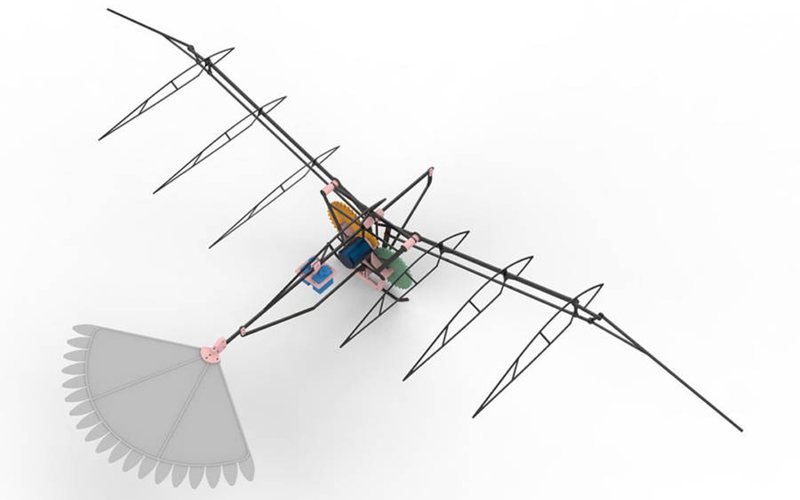[aviation news]
Brazilian researchers develop unmanned air vehicles inspired by macaws and hummingbirds for civil and military use
Research conducted at the Faculty of Ilha Solteira Engineering, Paulista State University (UNESP), investigates the development of bioinspirated drones, based on poultry characteristics such as macaws and hummingbirds.
The project, led by engineer Douglas Bueno, aims to build unmanned air vehicles more efficient, with applications in areas such as transportation, environmental monitoring and military use. The partial results of the study were presented during the 25th edition of FAPESP Week França, held from 10 to 12 June.
Started in 2023, the project is expected to be completed in 2028 and involves more than 21 researchers divided into four fronts: structure, aerodynamics, energy efficiency and vehicle control. The proposal assumes that bird flight is more efficient than current aeronautical systems. “There are factors such as energy saving and the possibilities of maneuver we only see in birds”, Disse good.
Two prototypes are under development: one medium-sized, inspired by Arara-Canindé, and one small, based on hummingbird. The choice of birds considered characteristics such as size, maneuvering and aerodynamic potential. The teams have advanced in the theoretical definition and began the production of the first pieces in 3D printers, as well as computational simulations.
Researchers at Ilha Solteira’s Faculty of Engineering, Paulista State University (UNESP), develop bioinspirated drones based on bird characteristics such as macaws and hummingbirds. The goal is to create more efficient unmanned air vehicles (Vants), with transportation applications, environmental monitoring and military operations.
The project, led by engineer Douglas Bueno, had its partial results presented at the 25th edition of Fapesp Week França, held from 10 to 12 June. Started in 2023, the study brings together 21 researchers and should be completed by 2028. Work fronts include structure, aerodynamics, energy efficiency and flight control.
!function(f,b,e,v,n,t,s)
{if(f.fbq)return;n=f.fbq=function(){n.callMethod?
n.callMethod.apply(n,arguments):n.queue.push(arguments)};
if(!f._fbq)f._fbq=n;n.push=n;n.loaded=!0;n.version=’2.0′;
n.queue=[];t=b.createElement(e);t.async=!0;
t.src=v;s=b.getElementsByTagName(e)[0];
s.parentNode.insertBefore(t,s)}(window,document,’script’,
‘
fbq(‘init’, ‘1626712270970227’);
fbq(‘track’, ‘PageView’);
Share this content:

